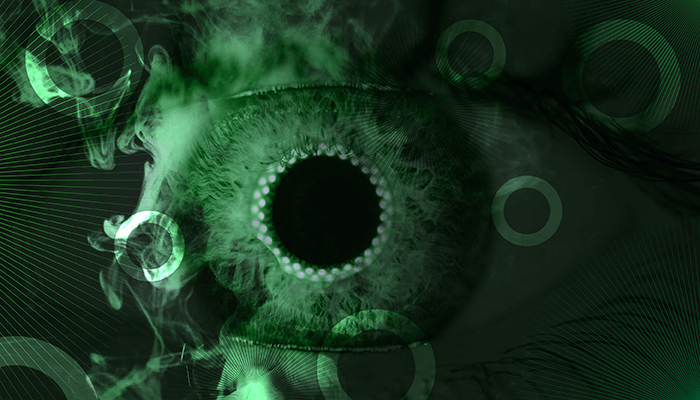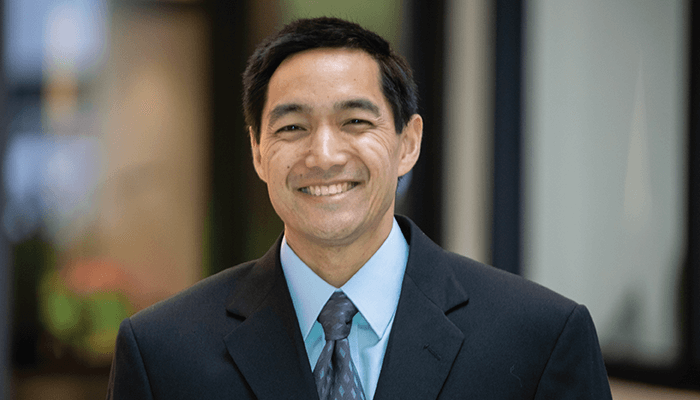
What is the effect of cannabis use on the eyes of patients and how will the increased decriminalization and legalization of cannabis across the US – and around the world – affect the eye health and care of the growing population of cannabis users? Jason S Ng explores the current literature on the relationship between cannabis use and ocular changes, and explains how – and why – practitioners should incorporate cannabis use into their thought, assessment and diagnostic processes.
How does cannabis affect eyes and vision?
There are several acute effects that cannabis use can have on a patient’s eyes and vision. The most obvious sign is conjunctival hyperemia. There have also been reports of cannabis causing an acquired ptosis (1). Additionally, cannabis has been used to treat blepharospasm, but, conversely, there are also reports in which cannabis has been linked to causing eyelid tremor in some patients. Another sign is reduced intraocular pressure (IOP), but, in some cases, cannabis may not alter or might even slightly raise IOP (2, 3). Nevertheless, as eye care professionals, we know that any IOP reduction with cannabis use is more transient and less effective compared with FDA approved therapeutics. Cannabis use has also been associated with a slight decrease in pupil size, but this difference is subclinical (4). Lastly, law enforcement in the US has found a decline in convergence ability as well as a specific type of pupil issue they term “rebound dilation” (5). Some studies have also demonstrated changes in visual acuity, contrast sensitivity, and accommodation, but these differences are not clinically significant.
What differences are observed between the eyes of different types of cannabis users (for example, occasional/regular/abusers or recreational/medicinal)?
Most of the literature has examined occasional users and this where our current state of knowledge exists on most vision functions, such as those mentioned above. Some studies have looked at more regular users – and the law enforcement work has typically looked at recreational, “on the street” usage. In my opinion, there isn’t enough literature examining similar vision functions or eye effects across the different types of users. These types of studies would certainly have value – it is easy to imagine that those using higher doses will experience more severe effects.
How should ophthalmologists and optometrists factor cannabis use into patient assessment and care?
I think eye care professionals need to ask specifically about cannabis use. In some places, we might still expect patients to report this in our intake forms asking about “illicit drug” use, but not all patients will want to answer such a question. Additionally, with increased legalization, cannabis is no longer considered an illicit drug in many places and thus specifically asking about cannabis use is important. From there, asking about the regularity of use as well as the dosage, type, and form can be important (certain forms have much higher concentrations and certain forms, like edibles, have delayed effects).
For the more acute effects that may impact our patient assessment at the time of visit, knowing how recently cannabis was used for a particular patient is going to be important. For example, if a patient has conjunctival hyperemia caused by recent cannabis use, we would save a great deal of time knowing that cannabis is the likely cause. Similarly, we may also need to factor such information in the patient’s IOP; if it is borderline high, it may have been much higher if cannabis had not been recently consumed, which would warrant a sooner follow-up for an IOP recheck. Likewise, understanding the possible pupil or eyelid effects of cannabis use can better inform the clinician if and when a differential diagnosis is needed.
Is such self-medication (for example, in glaucoma) something that should worry ophthalmologists?
Most definitely. Self-medicating is always an issue. Through online articles, and even sometimes inside a cannabis dispensary itself, patients are being told that these compounds treat a various number of ailments, when in fact there are only a few FDA approved conditions where these compounds are being used. Luckily, in the US, the trend has been that, while there are more cannabis users, there are fewer abusers. With the more occasional user, there is less to worry about.
However, if a patient is specifically taking a cannabis-based compound to treat a given ailment that has insufficient evidence for its use, the patient has the potential to cause more issues. As clinicians, we definitely have a responsibility to continue to educate our patients on best practices and preferred practice patterns.
How would you describe the current research landscape for cannabis use and vision?
Overall, the amount of literature on the effects of cannabis use on vision is scant. The main challenge, at least in the US, is that cannabis is still a schedule I drug at the Federal level, and this makes obtaining institutional review board approval for research studies difficult. Even where cannabis is legal in a state or municipality, it is still not always clear to governing bodies how cannabis studies can be approved or funded with the Federal classification standing.
Beyond this, there is perhaps the issue of classifying and enrolling subjects as regular users or abusers – which are a vulnerable population that some feel should not be enrolled in studies. The final issue is trying to standardize a form and dosage(s) that researchers can study; as an aside, the NIDA/NIH recently published a notice for researchers to measure and report research on cannabis using a “standard unit” defined as 5 mg of THC (6).
What areas of research would you like to see covered by future studies?
More studies should look at IOP – and the potential differential and synergistic effects between CBD and THC; there is some concern about the elevation of IOP in some patients with some of these compounds. We also need more research on the binocular vision and eye movement effects that come about with use of these compounds, as well as a measure, through attentional visual field and vision perception studies; such studies have the potential to inform us more about cannabis use and both motorized and non-motorized vehicle use.

Author Affiliation
Jason S. Ng, Associate Professor, Southern California College of Optometry, Marshall B Ketchum University, Fullerton, California, USA
References
- AX Nguyen, AY WU, “Association between cannabis and the eyelids: a comprehensive review,” Clin Exp Ophthalmol, 48, 230 (2020). PMID: 31747112.
- A Passani et al., “Cannabinoids in glaucoma patients: the never-ending story,” J Clin Med, 9, 3978 (2020). PMID: 33302608.
- S Miller et al., “Δ9-Tetrahydrocannabinol and Cannabidiol Differentially Regulate Intraocular Pressure,” Invest Ophthalmol Vis Sci, 59, 5904 (2018). PMID: 30550613.
- S Ortiz-Peregrina et al., “Effects of cannabis on visual function and self-perceived visual quality,” 11, 1655 (2021). PMID: 33462319.
- National Highway Traffic Safety Administration, “Marijuana-Impaired Driving: A Report to Congress” (2017). Available at: https://bit.ly/3W0LLuP
- NIH Central Resource for Grants and Funding Information, “Notice of Information: Establishment of a Standard THC Unit to be used in Research” (2021). Available at: https://bit.ly/3X0zecj
